
Roots
A quiet observation ❉ The strands that crown us, a personal cosmos, continually dance with the world around them. They respond to the air we breathe, the sun’s gentle touch, and the unseen elements floating through our spaces. This section begins a thoughtful consideration of these elemental truths, the foundational principles that shape our hair’s existence. Here, we peel back layers, not to reveal a simple secret, but to honor the inherent complexities and delicate balances within each curl and coil.
We seek to understand the very structure that dictates how hair receives and releases moisture, a quality known as porosity. A genuine comprehension of these core aspects grants a clearer mirror to our hair’s individual needs, a gentle wisdom guiding our care.

Hair Anatomy and Physiology Specific to Textured Hair
To truly grasp how external forces, such as pollution, might alter hair’s interaction with moisture, one must first appreciate the intricate design of the hair itself. Each strand, though seemingly simple, is a marvel of biological engineering. At its heart lies the Hair Follicle, a tiny organ nestled within the scalp, whose shape profoundly influences the hair’s curl pattern. For textured hair, this follicle is typically elliptical or flattened, giving rise to the characteristic bends, twists, and coils we admire.
This distinct shape means the hair shaft itself is not perfectly round but also takes on an elliptical or ribbon-like form. This structural variation has a direct bearing on how hair behaves, particularly concerning its outer protective layer.
The outermost layer of the hair shaft, the Cuticle, consists of overlapping, scale-like cells, much like shingles on a roof. In straight hair, these cuticles tend to lie flat and smooth, creating a uniform surface. For textured hair, however, the cuticle scales may naturally be more raised or uneven due to the hair’s coiled structure and the points where the strand bends. This natural lift, while part of its unique beauty, also presents a surface that can be more susceptible to external influences.
The integrity of this cuticle layer is paramount to hair health; when these scales lie close, they provide a strong barrier, helping to retain moisture and reflect light, lending a healthy sheen. When they lift, the inner layers become exposed, making the hair vulnerable to environmental factors and moisture loss.
Beneath the cuticle resides the Cortex, the hair’s central and thickest layer, composed of keratin proteins bundled together. This cortex is responsible for hair’s strength, elasticity, and color. Deep within some hair types, a central core, the Medulla, may also be present, though its precise function is not fully understood. The interplay between these layers, especially the cuticle’s condition, determines hair’s porosity.
Porosity, simply put, describes hair’s capacity to absorb and hold water. Hair with tightly bound cuticles exhibits low porosity, resisting moisture entry. Hair with lifted or compromised cuticles displays high porosity, readily absorbing water but also losing it with similar ease. Understanding this inherent architecture sets the stage for comprehending how environmental elements can disrupt this delicate balance.
Hair’s inherent porosity, its capacity to absorb and retain moisture, is profoundly shaped by the unique, often naturally lifted, structure of its outer cuticle layer.

Textured Hair Classification Systems and Porosity
The world of textured hair celebrates a rich spectrum of patterns, from loose waves to tight coils. Various classification systems exist to categorize these differences, offering a common language for discussion and care. While systems like the Andre Walker typing chart (e.g. 3A, 4C) primarily describe curl pattern, they indirectly connect to porosity.
Generally, hair with tighter curl patterns (e.g. 4C) tends to have a more naturally raised cuticle due to the frequent bends and twists in the strand. This can sometimes correlate with a predisposition toward higher porosity, though this is not a strict rule, as porosity is also influenced by genetics and hair care practices.
These systems serve as guides, helping individuals identify their hair’s general characteristics and anticipate its needs. For instance, knowing one has a tighter curl pattern might prompt a closer look at moisture retention strategies, as natural oils from the scalp find it more challenging to travel down a highly coiled strand, leaving the ends drier. This inherent dryness can sometimes be misconstrued as high porosity, or it can exacerbate existing porosity concerns.
Recognizing one’s curl type, therefore, becomes a stepping stone toward understanding its probable porosity and tailoring appropriate care. The goal is not rigid adherence to a label, but a gentle inquiry into what the hair communicates about its structure and thirst for hydration.

The Essential Lexicon of Textured Hair
To navigate the nuances of textured hair care, a shared vocabulary proves helpful. Here are some terms central to understanding hair’s interaction with moisture:
- Porosity ❉ This term describes the hair’s ability to absorb and hold moisture. It depends on the condition of the hair’s cuticle layer.
- Low Porosity ❉ Hair with low porosity has tightly closed cuticles. It resists moisture entry, causing water to bead on the surface. Once moisture enters, however, it is retained well.
- Normal Porosity ❉ This hair type has cuticles that are neither too open nor too closed. It absorbs and retains moisture effectively, often considered the ideal state for hair health.
- High Porosity ❉ Hair with high porosity has lifted or damaged cuticles, allowing moisture to enter quickly but also escape with ease. This can result from genetic predisposition or external damage.
- Hygroscopy ❉ The property of a substance to attract and hold water molecules from the surrounding environment. Hair is naturally hygroscopic, but its degree of hygroscopy is influenced by porosity.
- Cuticle Integrity ❉ Refers to the health and smoothness of the hair’s outermost layer. A compromised cuticle lacks integrity, leading to moisture loss and vulnerability.
- Hydrophobic ❉ Describes a substance that repels water. Healthy hair, with intact cuticles, has a naturally hydrophobic surface.
- Hydrophilic ❉ Describes a substance that attracts water. Damaged hair, with lifted cuticles, becomes more hydrophilic, absorbing water more readily.
Grasping these terms allows for a more precise dialogue about hair health and tailored product selection. When we speak of pollution altering porosity, we are truly speaking of these very mechanisms ❉ the disruption of cuticle integrity, the shift from a more hydrophobic to a more hydrophilic surface, and the subsequent changes in the hair’s ability to manage its own moisture content.
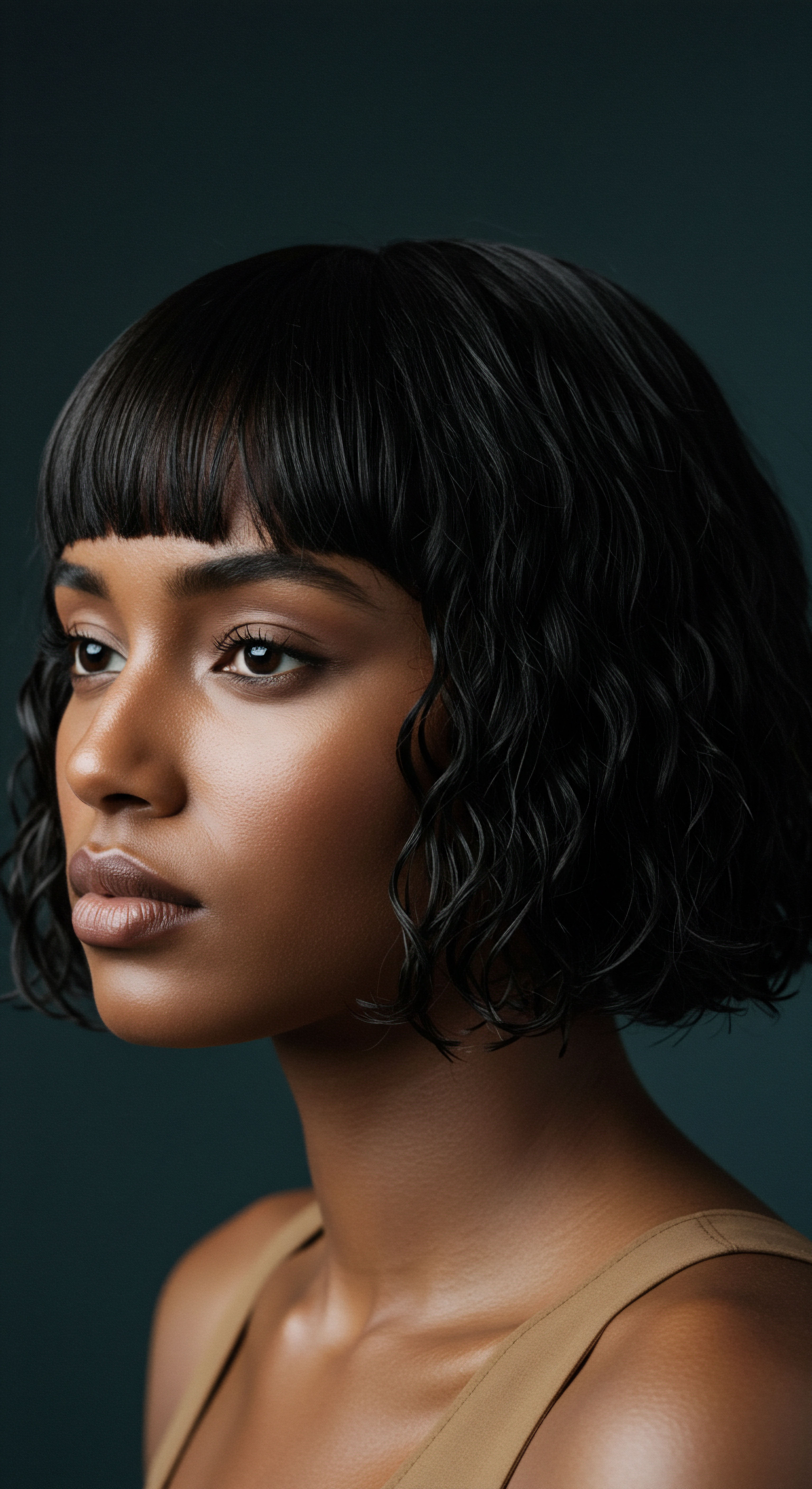
Hair Growth Cycles and Influencing Factors
Hair’s life is a cyclical journey, moving through distinct phases. The Anagen Phase marks the period of active growth, where hair cells divide rapidly, forming new hair shafts. This can last for several years. Following this is the brief Catagen Phase, a transitional period where growth ceases, and the hair follicle shrinks.
Finally, the Telogen Phase is a resting period, after which the hair sheds, and the cycle begins anew. While these cycles are primarily dictated by genetics, numerous internal and external factors can influence their duration and the quality of the hair produced.
Internal factors, such as nutrition, hormonal balance, and overall health, play a significant role in determining hair’s strength and vitality. A diet lacking essential nutrients can lead to weaker strands, more prone to damage. External factors, particularly environmental stressors, also cast a long shadow. Pollution, UV radiation, and harsh weather conditions can inflict damage on the hair shaft, even as it grows.
This external assault can weaken the hair’s structure, making it more susceptible to changes in porosity. A hair fiber that develops under continuous environmental strain may emerge with a compromised cuticle, predisposing it to porosity challenges from its very beginning. The continuous interplay between our inner well-being and the external world shapes the story of our hair, from its nascent beginnings to its graceful shedding.
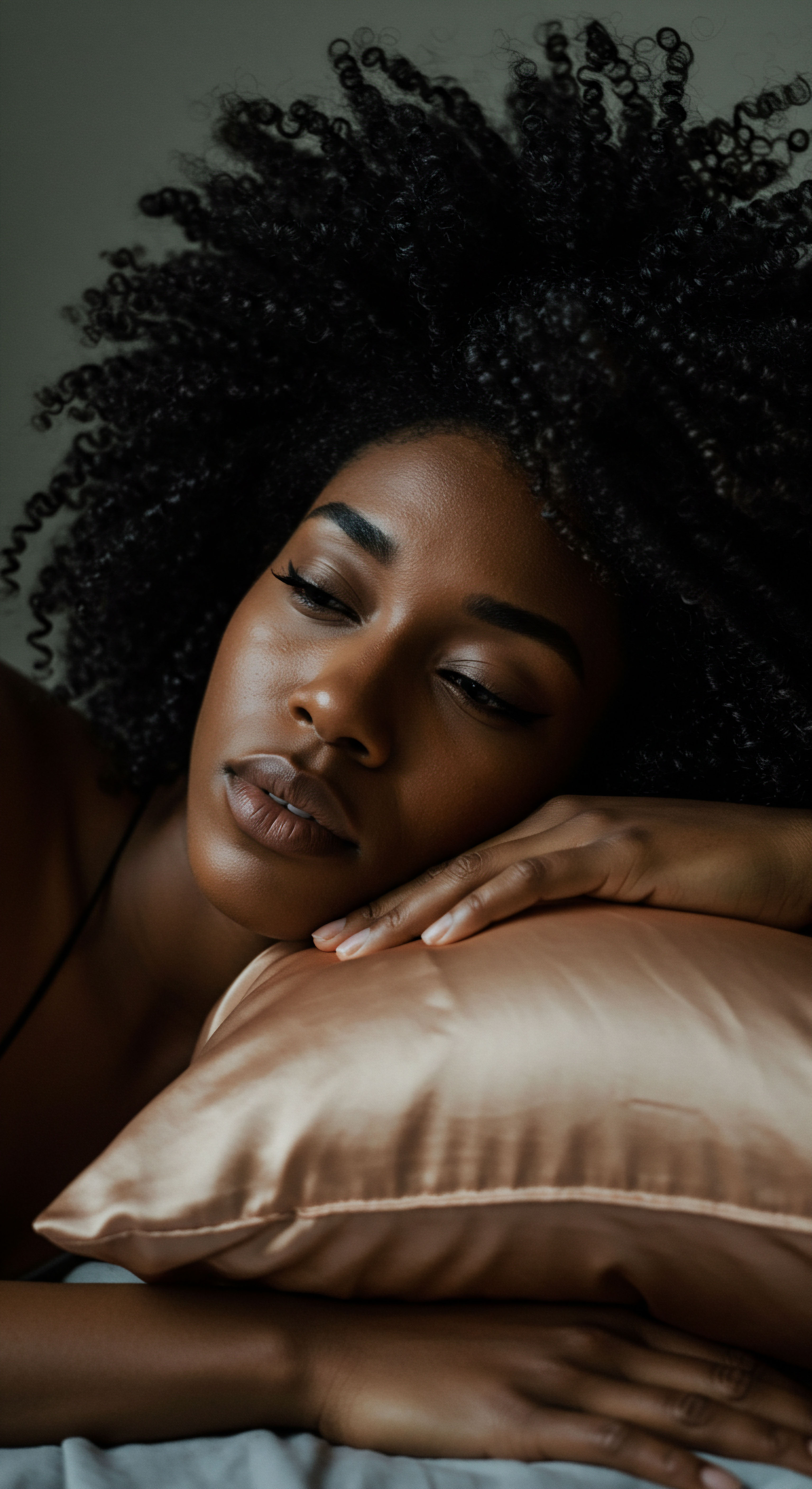
Ritual
Stepping beyond the foundational understanding of hair’s architecture, we now turn our attention to the daily and periodic practices that shape its vitality. This section invites a consideration of practical wisdom, a gentle guide through the purposeful actions that nourish and protect. Here, we acknowledge the inherent dialogue between our hands, our choices, and our hair’s well-being. It is a space where techniques and methods are explored with a mindful approach, sidestepping any rigid rules to instead offer pathways to healthier hair, particularly when considering the subtle, persistent presence of environmental stressors.

Building Personalized Textured Hair Regimens
A successful hair care regimen for textured hair is rarely a one-size-fits-all solution; it is a conversation, a continuous adjustment based on what your hair communicates. Understanding your hair’s porosity is a cornerstone of this dialogue. It dictates how products will interact with your strands and how effectively moisture will be absorbed and retained. The good news is that assessing your hair’s porosity does not require specialized lab equipment; simple home tests can offer valuable clues.
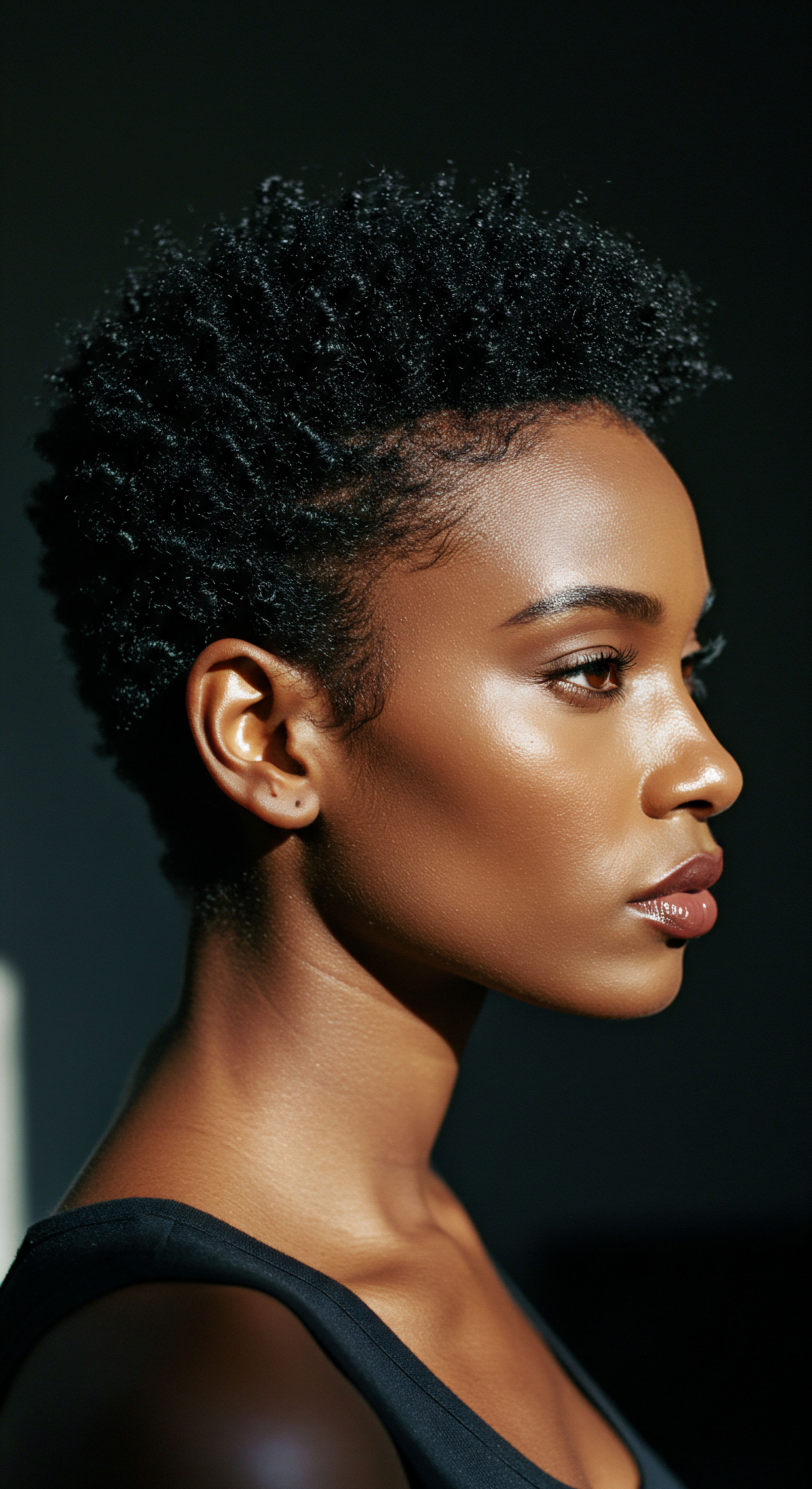
How to Assess Your Hair’s Porosity
Two common methods allow for a preliminary assessment:
- The Float Test ❉ Take a few clean, dry strands of hair (preferably from a shed hair, not pulled) and place them into a glass of room-temperature water. Observe for a few minutes.
- If the hair floats on top, it suggests Low Porosity. The tightly closed cuticles resist water entry.
- If the hair sinks immediately or quickly, it indicates High Porosity. The lifted cuticles readily absorb water.
- If the hair floats somewhere in the middle, it likely possesses Normal Porosity.
- The Spray Test ❉ Mist a small section of clean, dry hair with water.
- If the water beads up on the surface and takes time to absorb, this points to Low Porosity.
- If the water is absorbed almost immediately, leaving the hair wet, this suggests High Porosity.
Once you have a general idea of your hair’s porosity, you can tailor your regimen. For low porosity hair, products that are lightweight and penetrate easily are preferred. Gentle heat (like a warm towel during deep conditioning) can help lift the cuticles for better product absorption.
For high porosity hair, the focus shifts to sealing in moisture. Heavier creams, butters, and oils, along with protein treatments, can help fortify the compromised cuticle and reduce moisture loss.
Tailoring hair care to individual porosity, whether low or high, begins with simple home tests, allowing for regimen adjustments that honor each strand’s unique needs.
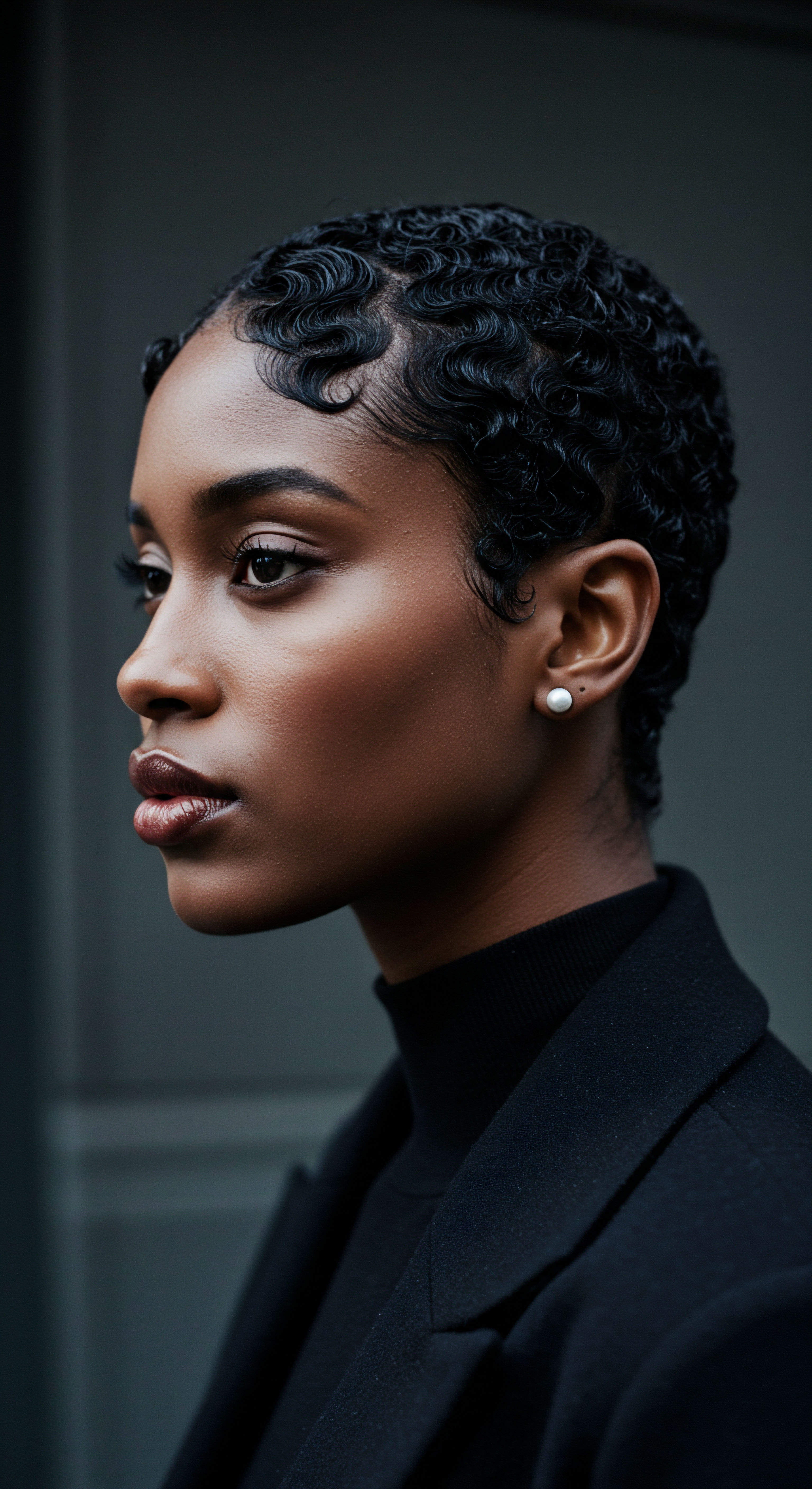
The Nighttime Sanctuary Essential Sleep Protection and Bonnet Wisdom
The care of textured hair extends beyond the waking hours, finding a quiet, protective rhythm in the night. Sleep, often perceived as a period of rest, can inadvertently become a source of friction and moisture loss for delicate strands. The seemingly innocuous act of tossing and turning on cotton pillowcases can lead to tangles, breakage, and the absorption of precious moisture from the hair fiber. This is where the wisdom of nighttime protection, particularly the use of silk or satin, enters the scene as a gentle yet powerful ritual.
Silk and satin fabrics possess a smooth surface that reduces friction between your hair and the sleeping surface. Unlike cotton, which has a rougher texture that can snag hair and absorb its natural oils and applied products, silk and satin allow hair to glide freely. This minimizes mechanical damage, such as split ends and breakage, which can otherwise exacerbate porosity concerns.
When the cuticle is repeatedly abraded, it lifts, increasing porosity and making hair more susceptible to external stressors. Protecting hair at night helps preserve its structural integrity, maintaining a smoother cuticle layer.
The use of a Bonnet or a Silk/satin Pillowcase serves multiple purposes. Beyond reducing friction, these protective coverings help to preserve the hair’s moisture content. Products applied before bed, such as leave-in conditioners or light oils, are less likely to be absorbed by the fabric and more likely to remain on the hair, providing continuous hydration.
This creates a micro-environment around the hair that is conducive to moisture retention, particularly beneficial for high porosity hair that struggles to hold onto water. For low porosity hair, it prevents unnecessary moisture loss, ensuring that the moisture already within the hair remains sealed.
Furthermore, nighttime protection offers a subtle shield against indoor environmental elements. While we often consider outdoor pollution, our indoor air quality can also contain dust, allergens, and other particulate matter. A bonnet acts as a physical barrier, reducing the deposition of these elements on the hair shaft.
This simple, consistent practice contributes significantly to overall hair health, supporting the hair’s natural defenses against external aggressors and preserving its delicate balance. It transforms the act of sleeping into an active period of care, a serene sanctuary for textured strands.
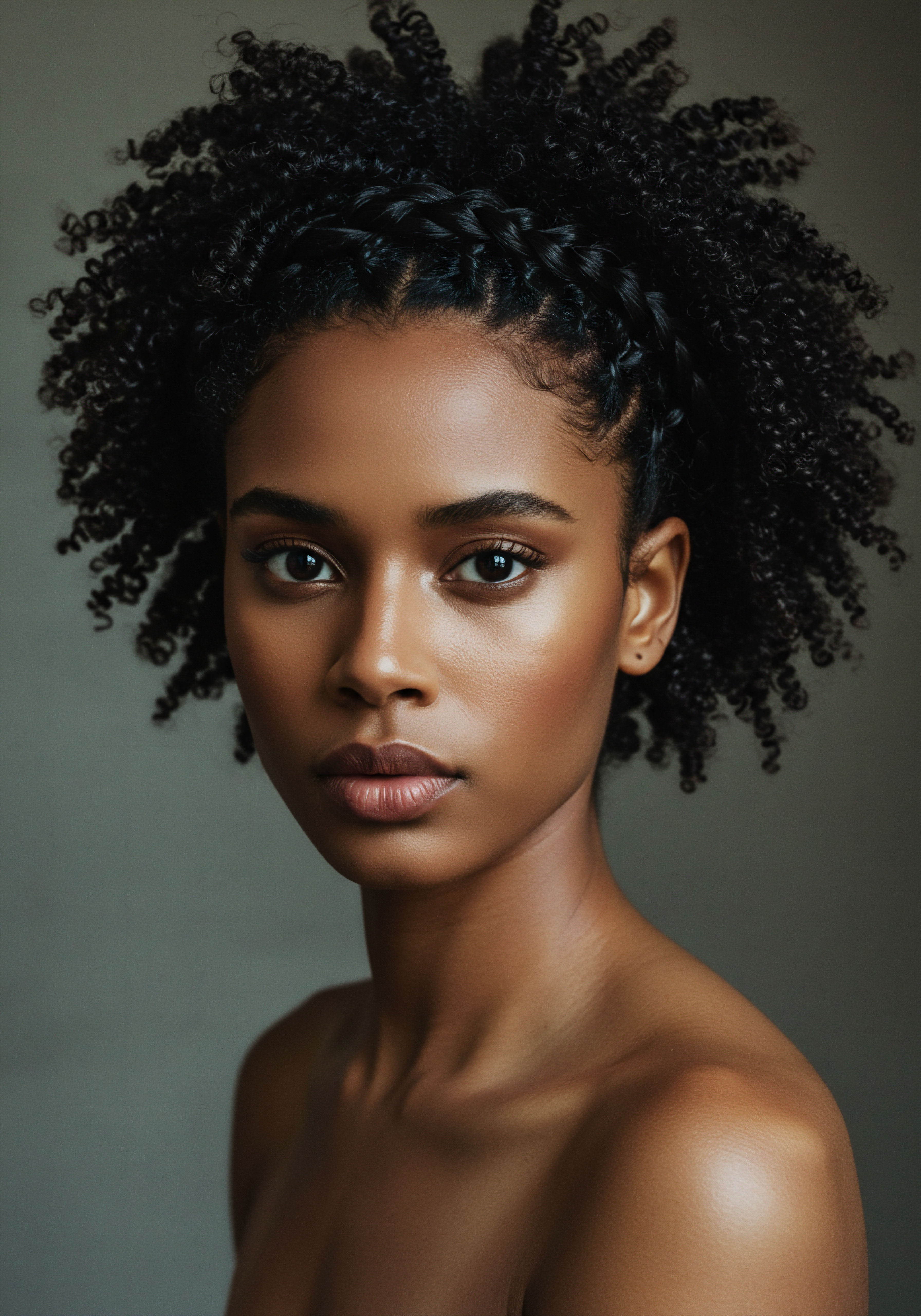
Ingredient Deep Dives for Textured Hair Needs
The products we choose are more than just formulations; they are partners in our hair’s well-being, especially when navigating the challenges posed by porosity and environmental factors. Understanding key ingredient categories and their specific roles can transform product selection from a guessing game into an informed, intuitive process.
- Humectants ❉ These ingredients, such as glycerin, hyaluronic acid, and panthenol, draw moisture from the air into the hair. For low porosity hair, humectants can be beneficial in moderation, helping to attract moisture to the surface without causing saturation. For high porosity hair, they are vital, as they help to pull much-needed moisture into the compromised hair shaft. However, in very dry climates, humectants can sometimes draw moisture out of the hair, so balancing them with emollients is important.
- Emollients ❉ These are conditioning agents that smooth the hair’s surface, filling in gaps in the cuticle and providing a protective barrier. Oils (like jojoba, argan, or shea butter) and fatty alcohols fall into this category. They are particularly beneficial for high porosity hair, as they help to seal in moisture and reduce its rapid escape. For low porosity hair, lighter emollients are preferred to avoid product buildup.
- Proteins ❉ Ingredients like hydrolyzed wheat protein, silk protein, or keratin work by temporarily patching gaps and weaknesses in the hair’s cuticle and cortex. They add strength and structure, making them invaluable for high porosity hair that has experienced damage, whether from chemical treatments, heat, or environmental stressors. For low porosity hair, protein treatments should be used sparingly, as too much can lead to stiffness and breakage.
Beyond these categories, ingredients with antioxidant properties, such as green tea extract or Vitamin E, are gaining recognition for their ability to combat oxidative stress caused by environmental pollutants. These ingredients can help protect the hair fiber from the subtle yet persistent damage inflicted by airborne particles and UV radiation. Selecting products that offer a balance of these elements, tailored to your hair’s porosity, creates a shield against the unseen aggressors in our environment, promoting resilience and lasting health.
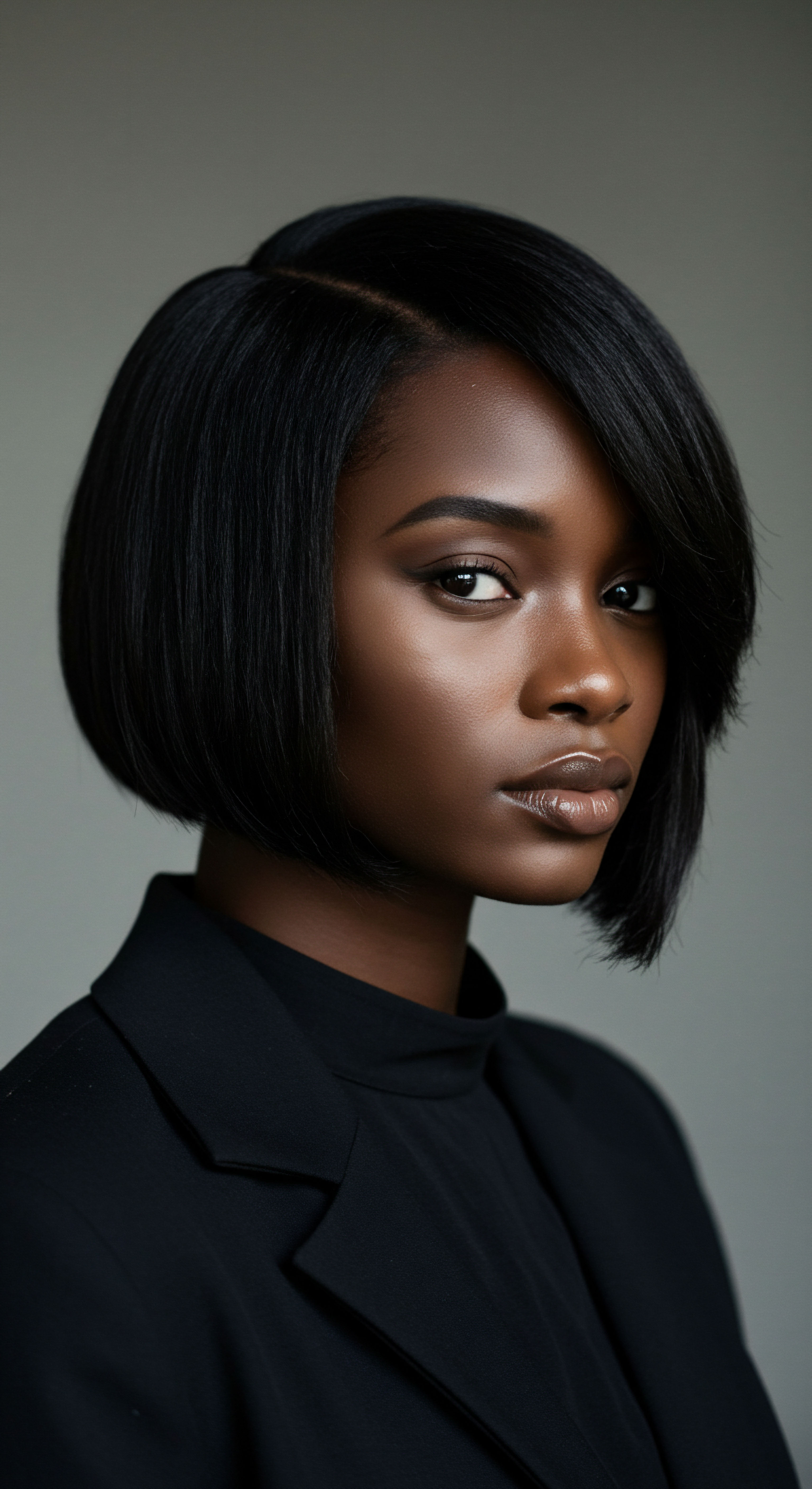
Textured Hair Problem Solving Compendium
Even with a well-thought-out regimen, textured hair can present unique challenges, often signaling an underlying issue. Dryness, breakage, and a lack of vibrancy are common concerns, and while many factors contribute, the subtle influence of pollution should not be overlooked. Recognizing these signs as potential indicators of environmental impact allows for a more targeted approach to problem-solving.

Addressing Common Hair Concerns
- Persistent Dryness ❉ If your hair feels perpetually dry, even after conditioning, it might indicate increased porosity. Pollutants can compromise the cuticle, allowing moisture to escape. Solutions involve layering hydrating products with emollients to seal moisture in. Consider incorporating leave-in conditioners and then topping with a heavier cream or oil.
- Unexplained Breakage ❉ Hair that snaps easily, particularly when styling, signals structural weakness. Environmental aggressors, through oxidative stress and protein degradation, can weaken the hair fiber over time. Regular protein treatments can help reinforce the hair’s internal structure, while gentle handling and protective styling reduce further mechanical stress.
- Dullness and Lack of Shine ❉ A healthy cuticle reflects light, resulting in shine. When cuticles are lifted or roughened by pollutants, hair appears dull. Using acidic rinses (like diluted apple cider vinegar) can help smooth the cuticle, and products with silicones or natural oils can create a reflective surface.
The act of cleansing is paramount, particularly for hair exposed to environmental pollutants. Particulate matter and other airborne contaminants can adhere to the hair shaft and scalp, contributing to buildup and potential irritation. A gentle yet effective cleansing routine is crucial. Consider using a sulfate-free shampoo that can lift impurities without stripping the hair’s natural oils.
Follow with a moisturizing conditioner to replenish hydration. For very fine particles, a chelating shampoo used periodically can help remove mineral deposits and heavy metals that might accumulate from hard water or pollution. By observing your hair’s responses and making thoughtful adjustments, you can navigate these challenges, restoring its vibrancy and resilience even in a world filled with unseen elements.

Relay
As we deepen our conversation, we arrive at a space where the unseen forces of our environment meet the delicate structure of our hair. This section extends an invitation into a profound exploration, where scientific understanding converges with the lived experience of textured hair. We move beyond the apparent, seeking to illuminate the less obvious complexities that the presence of pollution unearths. The tone here remains grounded and warm, yet it delves into the intricate details, drawing upon research and scholarship to paint a more complete picture of this quiet, continuous dialogue between our strands and the world.

Pollution’s Silent Influence on Hair Porosity
The air we breathe, the water we use, and the surfaces we encounter carry a multitude of microscopic particles and chemical compounds, collectively known as environmental pollutants. These silent, pervasive elements exert a subtle yet significant influence on our hair, particularly its porosity. Understanding the types of pollutants and their mechanisms of damage is the first step toward mitigating their impact.

Types of Pollutants and Their Mechanisms
- Particulate Matter (PM2.5, PM10) ❉ These microscopic airborne particles, originating from vehicle emissions, industrial activities, and dust, are small enough to settle on hair surfaces and even penetrate hair follicles. They can cause physical abrasion to the cuticle layer, leading to roughening and lifting of the scales. Beyond physical damage, PM carries adsorbed chemicals, including polycyclic aromatic hydrocarbons (PAHs) and heavy metals, which can induce oxidative stress.
- Heavy Metals ❉ Lead, mercury, cadmium, and arsenic, often present in urban air and water, can accumulate on and within the hair shaft. These metals act as catalysts for free radical generation, accelerating oxidative damage to hair proteins and lipids. Their presence can alter the hair’s internal structure, affecting its mechanical properties and making it more prone to breakage and, consequently, increased porosity.
- Volatile Organic Compounds (VOCs) ❉ Found in vehicle exhaust, industrial solvents, and household products, VOCs can contribute to the formation of ozone and other reactive species in the atmosphere. These compounds can degrade the lipid layer on the hair surface, which is crucial for maintaining the cuticle’s smooth, protective barrier and thus, hair’s natural hydrophobicity.
- UV Radiation ❉ While often considered separately, UV light is a potent environmental aggressor, and its effects are often exacerbated by the presence of other pollutants. UV-A and UV-B rays induce oxidative stress, leading to the degradation of keratin proteins and melanin (hair pigment). This protein loss and structural damage directly compromise cuticle integrity, leading to increased porosity and a diminished ability to retain moisture.
- Ozone ❉ A component of smog, ozone is a powerful oxidizing agent. It reacts with the lipids and proteins in the hair shaft, causing damage that can manifest as cuticle lifting and a general weakening of the hair fiber, contributing to higher porosity.
The collective action of these pollutants creates a challenging environment for hair. They do not merely sit on the surface; they interact with the hair’s biochemical components, initiating a cascade of changes that can fundamentally alter its ability to manage moisture. This leads directly to a shift in porosity, making hair either overly receptive to water (and thus quick to lose it) or creating a compromised, brittle structure.

The Interplay of Environment and Hair Structure
The delicate balance of hair’s structure is constantly in dialogue with its surroundings. When environmental pollutants enter this conversation, they introduce disruptive elements. The unique architecture of textured hair, with its naturally more open cuticle scales and varying curl patterns, means it can sometimes respond differently to these external pressures. Pollutants adhere to the hair shaft, not merely as inert dust, but as active agents capable of initiating chemical reactions that compromise hair integrity.
The mechanisms of damage are complex. Oxidative stress, caused by free radicals generated by pollutants and UV radiation, targets the hair’s protein backbone, primarily keratin. This can lead to protein degradation, literally breaking down the building blocks of hair.
Lipids, which form a protective layer on the hair’s surface and within the cuticle, are also susceptible to peroxidation, becoming damaged and less effective at sealing moisture. This lipid loss and protein damage contribute directly to cuticle lifting, a key indicator of increased porosity.

Can Urban Pollution Directly Increase Hair Porosity?
Research points to a clear connection. A study published in the Journal of Cosmetic Science by Lee, Choi, Lim, and Lee (2020) investigated the impact of air pollution on hair structure. Their work, conducted on human hair, observed that exposure to urban particulate matter (PM) significantly decreased hair protein content and caused cuticle damage. While this study was not exclusively focused on textured hair, the implications for porosity are direct ❉ when protein content is lost and the cuticle is damaged, the hair’s outer layer becomes less effective at maintaining its barrier function, allowing moisture to enter and escape more freely.
This phenomenon, known as increased permeability, is the very definition of higher porosity. The authors observed that the oxidative modification of proteins induced by urban pollution exposure led to hair cuticle structural damage, which in turn was revealed by an increased permeability.
Consider the daily exposure in densely populated areas. Billions of PM can settle on hair surfaces. This constant deposition and the subsequent oxidative damage can lead to structural alterations, including a loss of shine and changes to the hair surface.
For textured hair, where the cuticle may already be naturally lifted at the curves of the coils, this external assault can exacerbate existing vulnerabilities, pushing hair towards a higher porosity state or making already porous hair even more difficult to manage. The hair’s melanin, which provides its rich color, is also susceptible to oxidative damage, potentially altering its structural integrity and protective capabilities.
Pollution’s silent assault on hair involves oxidative stress and protein degradation, leading to cuticle damage and increased porosity, a vulnerability amplified in textured hair’s intricate structure.

Cultural and Historical Perspectives on Hair Protection
The concept of protecting hair from environmental elements is not a modern invention; it is a practice deeply rooted in the cultural heritage of communities with textured hair across generations. Long before the advent of scientific laboratories and cosmetic chemistry, ancestral wisdom guided the care and preservation of hair, offering lessons that remain relevant today.
Across various African and diasporic cultures, hair has always held profound significance, serving as a symbol of identity, status, spirituality, and beauty. This reverence for hair naturally extended to practices aimed at its preservation. Protective styles, such as braids, twists, and elaborate wraps, were not merely aesthetic choices; they served a crucial functional purpose.
By enclosing the hair, these styles shielded it from direct exposure to sun, dust, and other environmental aggressors. This physical barrier minimized mechanical damage and reduced the deposition of external particles on the hair shaft, effectively acting as an early form of environmental protection.
The application of natural oils and butters, like shea butter, coconut oil, and various plant-derived concoctions, was another widespread practice. These substances served as emollients, providing a lipid layer that helped to seal the hair’s cuticle, thereby reducing moisture loss and offering a physical barrier against pollutants. This echoes modern understanding of how emollients help manage porosity. These historical practices were not just about hygiene; they were sophisticated, intuitive responses to the challenges posed by diverse climates and environments, a testament to generations of accumulated knowledge about hair’s delicate balance.
The continuity of these traditions into contemporary textured hair care speaks volumes. The modern embrace of protective styles, the preference for natural oils, and the growing awareness of scalp health are direct descendants of this rich heritage. They remind us that the conversation about hair and its environment is cyclical, with ancient wisdom often providing foundational insights for today’s scientific discoveries. This cultural memory offers a grounding presence, connecting our present practices to a long lineage of care and resilience.

Beyond the Surface Hair as a Biomarker for Environmental Exposure
Hair, beyond its aesthetic and cultural significance, serves as a remarkable biological archive. As it grows, it continuously incorporates substances from the body’s internal environment and from external deposition. This property makes hair a valuable, albeit complex, biomarker for assessing environmental exposure to various pollutants.
The analysis of hair for heavy metals, pesticides, and other chemical compounds offers a unique window into an individual’s long-term exposure history. Unlike blood or urine samples, which provide a snapshot of recent exposure, hair retains traces of pollutants for extended periods, reflecting exposure over weeks, months, or even years, depending on the length of the strand analyzed.
However, interpreting these findings requires careful consideration. The presence of a substance in hair indicates exposure, but distinguishing between internal absorption (from ingestion or inhalation) and external contamination (from direct contact with polluted air or water) can be challenging. For example, particulate matter can physically adhere to the hair surface, while heavy metals can be absorbed systemically and deposited into the growing hair shaft.
Despite these complexities, hair analysis offers a compelling tool for environmental health research. Studies using hair samples from populations in different environmental settings can reveal patterns of exposure and provide insights into the cumulative burden of pollutants. This understanding extends beyond cosmetic concerns, hinting at broader implications for overall wellness.
The hair, therefore, acts as a quiet witness to our environmental interactions, holding clues not only to its own health but to the health of the body it adorns. This intersection of hair science, environmental toxicology, and public health offers a profound perspective on the interconnectedness of our well-being with the world around us.
| Pollutant Type Particulate Matter (PM2.5, PM10) |
| Mechanism of Hair Damage Physical abrasion of cuticle, oxidative stress from adsorbed chemicals (PAHs, heavy metals). |
| Impact on Porosity Increases porosity by lifting and roughening cuticle scales. |
| Pollutant Type Heavy Metals (Lead, Mercury) |
| Mechanism of Hair Damage Catalyze free radical generation, protein degradation, disruption of hair's internal bonds. |
| Impact on Porosity Weakens hair structure, making cuticles more susceptible to lifting and increasing permeability. |
| Pollutant Type UV Radiation |
| Mechanism of Hair Damage Oxidative stress, degradation of keratin proteins and melanin, lipid peroxidation. |
| Impact on Porosity Compromises cuticle integrity, leading to lifted scales and higher porosity. |
| Pollutant Type Volatile Organic Compounds (VOCs) |
| Mechanism of Hair Damage Degradation of surface lipids, contributing to cuticle damage. |
| Impact on Porosity Reduces hair's natural hydrophobic barrier, allowing easier moisture entry and exit. |
| Pollutant Type Pollutants interact with hair's structure at multiple levels, leading to compromised cuticle integrity and altered porosity. |

Reflection
Our journey through the delicate interplay between pollution and textured hair’s porosity draws to a close, yet the conversation itself continues. We have seen how the world’s unseen elements, from the microscopic particulate matter in our air to the silent influence of heavy metals, quietly shape the very strands that crown us. This understanding is not meant to instill fear, but rather a deeper appreciation for the resilience of our hair and the profound wisdom embedded in its care.
Each curl and coil, with its unique structure, responds to its environment, reminding us of the interconnectedness of all things. As we move forward, may we carry this gentle awareness, approaching our hair not merely as a subject of routine, but as a living canvas, reflecting both the world it inhabits and the thoughtful care it receives.
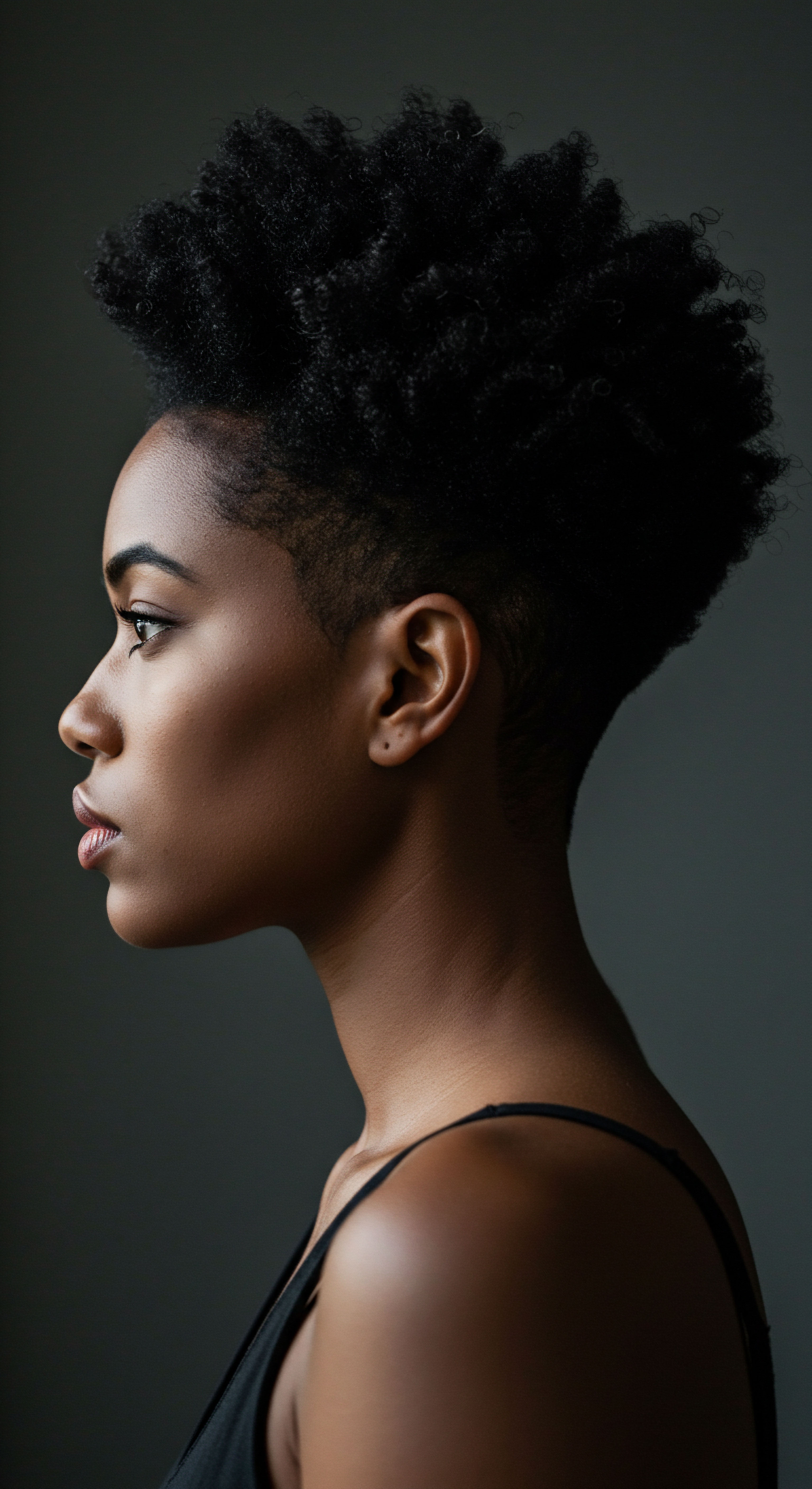
References
- Robbins, C. R. (2012). Chemical and Physical Behavior of Human Hair. Springer.
- Gavazzoni, M. F. & Piccinin, L. (2020). Hair and Environment ❉ An Update. Journal of Cosmetic Dermatology, 19(1), 10-15.
- Lee, H. Choi, Y. Lim, H. & Lee, K. (2020). Assessment of the Impact of Air Pollution on Hair Structure and Scalp Health. Journal of Cosmetic Science, 71(1), 43-52.
- Bouillon, C. & Wilkinson, J. B. (2005). The Science of Hair Care. CRC Press.
- Draelos, Z. D. (2011). Hair Cosmetics ❉ An Overview. Clinics in Dermatology, 29(6), 721-728.
- Khushboo, S. Singh, R. Singh, V. K. & Sharma, P. K. (2018). Impact of Environmental Pollution on Hair Structure and Growth. Journal of Pharmaceutical Sciences and Research, 10(7), 1664-1667.
- Popescu, L. & Hogea, M. (2006). Environmental Pollution and Hair Damage. Environmental Science and Pollution Research, 13(4), 232-238.
- Naudin, G. et al. (2019). Human Pollution Exposure Correlates with Accelerated Ultrastructural Degradation of Hair Fibers. Proceedings of the National Academy of Sciences, 116(37), 18320-18325.
- Scherz, J. (2006). The Science of Hair. Thomson Delmar Learning.
- Halal, J. (2013). Hair Structure and Chemistry Simplified. Milady.